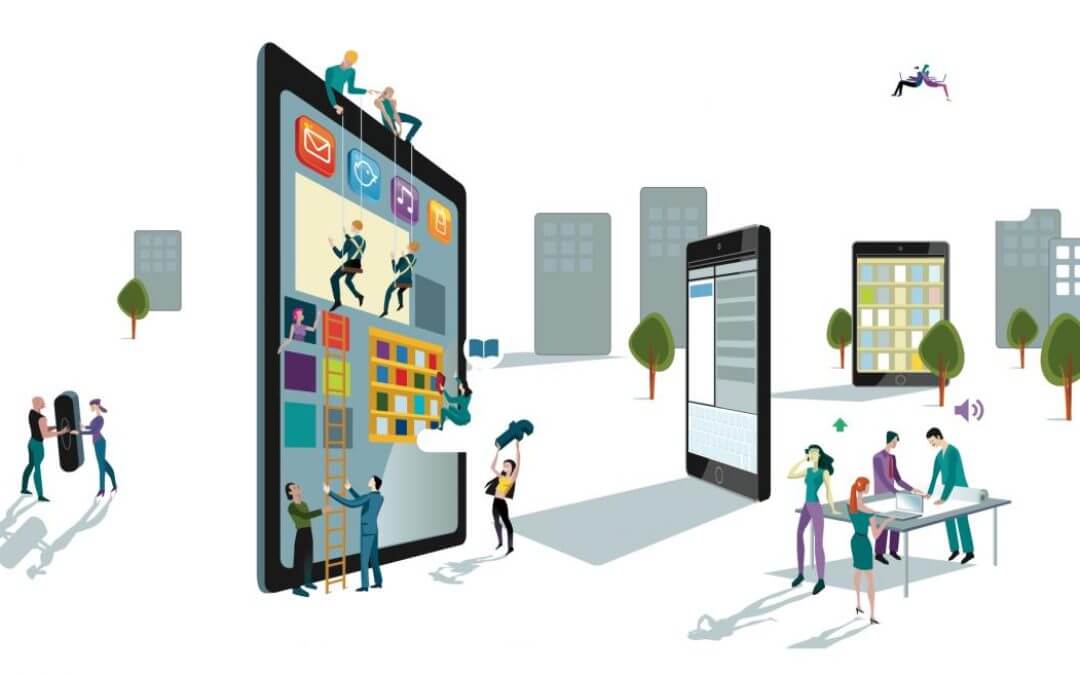The Strength of Digital Today
Across the globe, digital innovations are disrupting industries at lightning speed. And brands who want to be positioned to thrive, need to move fast enough to stay ahead. As a result, businesses leading digital transformations today are digitally innovating, digitally connecting, and digitally disrupting at record paces.
Moving Digital Forward
Accelerating into the future at this speed and competing in a landscape where every touchpoint is interconnected is hard work. Many CEOs are under a lot of pressure to locate and install the right technology as fast as they can get the funds to do it. And it’s difficult to know where to prioritize time and money.
While some companies have engaged people who are uncovering digital insights, fueling innovation, and leveraging deep data, other companies are falling behind because their leadership isn’t driving the march and leading decision-making. Companies who want to lead a digital transformation right now need strong leadership, agility, and a forward-looking vision.
Digital Transformation Today Requires:
1. Strong Leadership
Being a digital leader no longer means simply being technologically savvy. Technological prowess is required, but it’s more than that. Driving a digital transformation means you have to be willing to take the driver’s seat in moving a clear, digital vision forward.
Many companies are carefully monitoring digital threats and opportunities. But the real challenge is using data and insights quick enough to stop these threats in their tracks. Without a clear vision from top leadership, this is impossible.
Putting digital first and gaining a deep understanding of the role digital plays in your business is a key part of being a successful leader today. If the future you envision doesn’t involve digital, it’s simply not a future. Leaders who are prioritizing digital innovations that work in line with their business’s core purpose are outperforming the competition.
2. Room to Innovate
Brands and businesses that are leading digital transformations today all show a commitment to constant testing, learning, and iteration. Many companies have even created unique spaces – innovation labs of sorts – to fuel digital innovation into the future.
Progressive, one of the U.S.’s largest auto insurers, created an Innovation Garage equipped with VR, interactive data screens, and the latest visualization tools. Progressive’s CEO believes that the Garage allows for agile, low-cost idea testing. People can move with speed and really focus, which adds energy to their work, and the space empowers people to imagine, experiment, and innovate.
The Innovation Garage lead to Progressive’s latest mobile app (Snapshot) that Progressive users or potential customers can opt into. The app gathers data from drivers’ smartphones and determines whether they qualify for an insurance discount based on their driving behaviors. This innovation allows Progressive to gather even more valuable data and offer increased value to their consumers. CVS also opened a similar digital innovation lab in Massachusetts that is focused on creating digital tools that will change the way healthcare is delivered.
3. Stay Super Connected
In the digital world today, timing is everything. And having the right timing requires staying deeply informed about what’s happening around you. Since everything is so connected, companies are widening their lenses for what to look for, both inside and outside their own business.
Esri, a mapping technology company founded in 1969 when the digital landscape didn’t even exist, believes digital mapping is one the best ways to see and leverage connections. And not just in 2D. Digital maps are becoming 3D. They have story and texture. It’s all about relationships, says the CEO: “what’s near what, what’s on top of what, what drives success.” This kind of mapping helps businesses stay responsive in shifting times.
And Esri isn’t alone in this belief. Lots of thriving companies today are using maps and spatial analysis to discover digital insights, makes connections, and fuel digital innovation. UPS is using spatial analysis to increase efficiency and cost savings. Starbucks is using GIS to do site selection with machine learning. Shell Oil is also using maps to do analytics.
Staying uber-connected also means more collaboration and more partnerships. The more companies that connect themselves with other big companies and small startups, the more pull they have. CVS is piloting a partnership with Uber in SF – leveraging Uber’s capabilities to increase pharmacy convenience. Keeping up with what other digital innovations mean to your business is also key to staying connected and pushing boundaries today.
Getting Everyone On Board
Digital transformations mean change – fast moves, big shake-ups, different status quos, shifting role. But for many, even those on the cutting edge of digital innovation, change can be hard. Many companies that are driving digital transformation overlook the challenge of getting everyone on board. So it’s important to remember that even the strongest digital strategy will fail if your people are not willing to embrace it.
Embedding adaptability, flexibility, and innovation into your culture can help make the shift to digital easier. People who are equipped to handle an ever-shifting status quo, who don’t settle for the now, and who are always looking toward the future are the people who you need to lead your digital change. Build a company culture that embraces digital for all that it is – unsteady, ever-changing, prolific, powerful, limitless. Then you will be able to take any digital transformation head on.
Emotive Brand is a San Francisco brand strategy and design agency.





